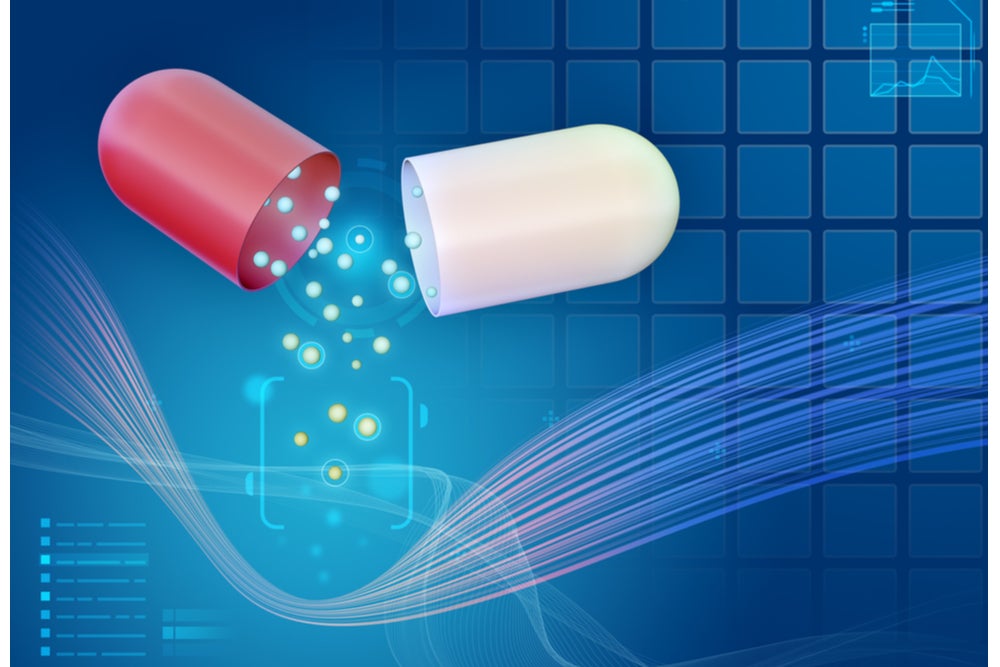
This question forms the basis of a new scientific research paper, Nanomilling and size characterization of highly concentrated API suspensions from Fribourg University, Switzerland, which details experiments using nanomilling techniques to reduce micron sized particles further down to nanometric size, thus useful for the pharmaceutical industry. Further, the paper looks in detail at how highly concentrated API suspensions are characterised using advanced Modulated 3D Dynamic Light Scattering (DLS).
Converting hydrophobic APIs into a water-soluble format is achieved by reducing the API down in size to the nanometre range, typically below 200nm, and then stabilising it with biocompatible surfactants. Currently, there are two processes available for this task. The first is the so-called “bottom-up” approach, where API nanoparticles are generated through agglomeration or granulation of single molecules. However, stopping nucleation and growth is challenging and often involves the use of biohazardous substances. Further scaling-up is delicate and laborious.
The second is the “top-down” approach during which an initial micrometre-sized product is processed to reduce its size down into the nano-range using bead milling. Nanomilling, in which the particles are ground in a suspension, allows for highly concentrated conditions, as well as precise process control, which are both required for a high yield. A major challenge in the top-down approach is the development of an efficient size reduction process by using a highly performant mill.
Finding the right Nanomilling solution
For most grinding processes, lower size limits are above the nanoscale, so grinding products for the nano-range face problems such as clogging of sieves. This is due to the small grid size needed for keeping 200 micron diameter milling beads in the process. Interrupting the process to change or clean the sieves is costly and time intensive.
To solve these issues, Frewitt, a world leader in powder size reduction technologies, launched the innovative FlexMill-Lab NanoWitt, a modular, milling solution for R&D and analytical laboratories featuring a patented and unique dynamic separator that does not depend on bead or raw product particle size. This was the equipment made available by Frewitt and used by Fribourg University to perform the research.
The NanoWitt also allows for easy loading and highly efficient separation of milling beads from the API suspension with interchangeable heads which can be installed or removed within seconds and are sealed for cleaning and sterilising. Additionally, the NanoWitt technology allows API milling down to a final product size of 50nm in diameter in a single operation with a minimal temperature increase. This is achieved with a reduced beads load, and a higher energy efficiency compared to competing bead mill equipment on the market.
Importantly for this research, the NanoWitt can be adapted to enable in-line sampling for size monitoring of the system through DLS.
Measuring particle size and characterisation
The accurate characterisation of particle size distribution, to determine whether desired milling size has been achieved and particles are stable with no agglomerates formed, is critical to the nanomilling process. Characterisation is usually performed using DLS. The sample is illuminated by a laser beam and fluctuations of the scattered light are detected at a known scattering angle by a fast photon detector. DLS instruments that measure at a fixed angle can also determine mean particle size.
However, DLS is only reliable in the case of highly diluted samples. In samples of mild to high concentration, a phenomenon called multiple scattering can occur and severely compromise sizing results.
This new research looks at using advanced DLS techniques such as modulated 3D technology, performed with two simultaneous light scattering experiments, with a cross-correlation of the resulting signals to identify the common single scattering information in both detection channels. In conjunction with learning algorithms, this enables the suppression of multiple scattering, ensuring more accurate results, regardless of sample concentration.
Results of the research
The authors successfully milled Naproxen and Fenofibrate down to between 79nm and 173nm respectively and proved that this technique showed concentration close to those typically found in industrial API nano milling processes.
Crucially, the authors showed that the size of the ground active ingredients in suspension could be accurately measured, even in turbid samples, by using modulated 3D Dynamic Light Scattering. These results demonstrate the potential of advanced DLS particle size analysis for quality and process control of nano milling processes.
The paper concludes by noting that the potential cost reductions generated in the production of highly bioavailable APIs, as well as improved quality control, can ultimately promote production of custom formulations.
Full details of the research by Fribourg University, including methods, results, and discussion, can be found here.


